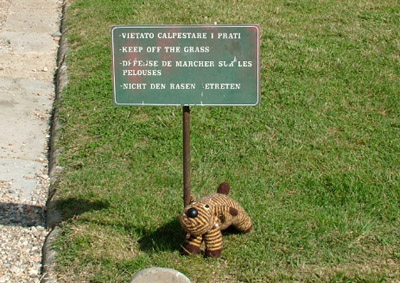The Garden that extends from the hill behind the Pitti Palace as far as Porta Romana, reached its current extension and appearance, becoming one of the largest and most elegant Italian style gardens, through several stages of enlargement and restructuring work carried out at diffrent times.
The first works initially affected the area that was closer to the palace, after the buildung had been purchased by Cosimo I de´ Medici and by his wife Eleonora di Toledo, who had chosen this place for new grand ducal palace.
The initial plan was drawn by Niccolò Tribolo, although the works were completed, after his death in 1550 by other architects including also Giorgio Vasari (from 1554 to 1561) along with Bartolomeo Ammannati and Bernardo Buontalenti under the reign of Francis I, who succeeded to his father Cosimo.
The Medici and the Lorraine families continued to enrich and enlarge the garden also in 17th, 18th and 19th centuries. Besides adding lovely meadows, avenues, small groves and beautiful panoramic views, they made the garden more precious by including extraordinary decorative complexes, thus forming an outdoor museum that exhibited both Roman and 16th and 17th century statues.
The first phase led to the creation of an “Amphitheatre” adjoined to the hill behind the palace. The early amphitheatre, initially formed by “edges and evergreen meadows”, was later replaced by a stone one decorated with statues based on Roman myths such as the Fountain of the Ocean sculptured by Giambologna, then transferred to another location within the same garden, the small “Grotto of Madama”, and the “Large Grotto”, which has begun by Vasari and ended by Ammannati and Buontalenti between 1583 and 1593.
Despite the fact that it is currently undergoing complex restoration work (1998) due to the damages suffered over centuries these statues continue to be remarkable examples of Mannerism architecture and culture.
Decorated internally and externally with stalatites and originally equipped with water plays and a luxuriant vegetation, the fountain is divided into three main sections.
The first one was frescoed to create the illusion of a natural grotto, that is a natural refuge to allow shepherds to protect themselves from wild animals, and originally housed the Prisoners of Michelangelo, which were moved to this location after they had become part of the Medici collection (the original statues have now been replaced by copies).
The rooms that follow exhibit valuable sculptures like the “Bathing Venus” of Giambologna and the group of “Paris and Hellen” of Vincenzo de Rossi.
NOTE:
Due to their very nature, these historical garden require costant restoration and maintenance.
A schedule has therefore been established which provide for their seasonal, yearly and long-term care through periodic renovation and upkeep.
Clearly, the architectural component and plant life are involved more frequently than the inorganic structures of the garden and its decorations, and although the different types of work are not necessarily interdipendent, they have been planned for during the same period of time.
Moreover, the need to safeguard sculptural works from degradation by atmospherical agents and vandalism often requires housing the originals indoors and replacing them with copies for display. Thus, the gardens’ furnishings are necessarily in an incomplete and costantly changing state.
Web-site: www.firenzemusei.it/boboli
Leslie Halloran
Please check out my website at: www.lihdesigns.net


0 Comments